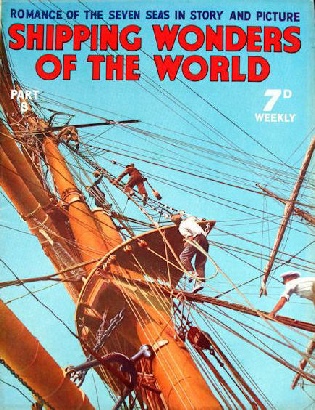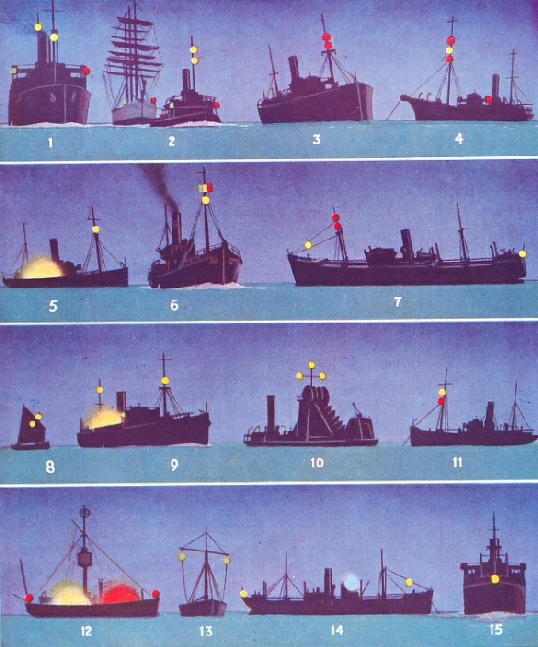
© Shipping Wonders of the World 2012-



Part 8
Part 8 of Shipping Wonders of the World was published on Tuesday 31st March 1936.
It included a colour plate illustrating signals used on ships at night. This accompanied an article on Pilots and their Work which is listed below.
The Cover
This week’s cover shows men going aloft on board the Archibald Russell, a sailing vessel of 2,354 gross tons, under the Finnish flag.
It was later used as the colour plate with part 33 and called “Going Aloft”.

Contents of Part 8
The Lure of Lost Gold
Searching for treasure on Cocos Island. Concluded from part 7.
Propelling the Modern Ship
Years of experience and ceaseless experiment, together with the ever-widening science of engineering, have made the ship’s engines the marvel that they are to-day - powerful and reliable.
The Drama of Life-Saving
To race with death and cheat the storm of the lives of men in stricken ships is a task nobly and bravely accomplished by the lifeboatmen. The story of the lifeboat is an extraordinarily interesting one. During 1935 there were 376 launches of British lifeboats of the Royal National Lifeboat Institution, and 492 lives were saved. Since the Institution was founded in 1824 over 64,000 lives have been saved, an average of eleven lives for every week of its 111 years of existence up to 1935. The Institution has 169 stations round the 5,000 miles of coast of the British Isles. The article also deals with the lifeboat service of other nations.
The First Voyage Round the World
The adventures and misfortunes of the great sixteenth-century seaman, Ferdinand Magellan. He led the first voyage round the world, and his name will always stand for courage and persistence, in the face of uncharted dangers. On September 20 1519, five small vessels set sail from San Lucar, a port at the mouth of the River Guadalquivir in Southern Spain. They were led by a navigator, Ferdinand Magellan, who proposed to sail round the world on a voyage of exploration. Some 275 men sailed into unknown and uncharted seas. On September 6 1522, only eighteen of them -with four natives - returned in one ship after unimaginable adventures and hardships. Magellan was dead - killed by savages in the Philippines - but his name lived and lives on as one of the greatest sailors of all time. His was an epic of the sea, if ever there was one.
This chapter is the first in the series on Supreme Feats of Navigation.
Pilots and Their Work
The highly responsible duties of the first-class pilot necessitates a thorough knowledge of navigation, and years of experience in ships.
